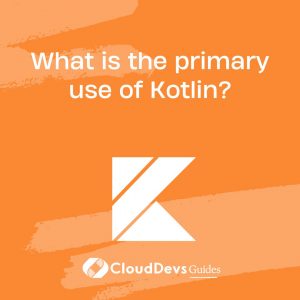What is the primary use of Kotlin?
The primary use of Kotlin encompasses a broad spectrum of software development scenarios, ranging from mobile applications to backend systems and beyond. Kotlin is a statically typed programming language designed to be concise, expressive, and interoperable with existing Java codebases, making it well-suited for a wide range of applications and use cases.
One of the primary use cases for Kotlin is Android app development. Since Google announced official support for Kotlin on the Android platform in 2017, Kotlin has emerged as the language of choice for building Android applications. Kotlin’s modern syntax, safety features, and seamless interoperability with Java have made it highly attractive to Android developers worldwide. With Kotlin, developers can leverage the power of a modern language while benefiting from the vast ecosystem of libraries, frameworks, and tools available for Android development.
Beyond Android, Kotlin is also widely used for backend development. Its expressive syntax, concise nature, and robust type system make it well-suited for building scalable and maintainable backend services and APIs. Kotlin integrates seamlessly with popular frameworks and libraries such as Spring Boot, Ktor, and Micronaut, enabling developers to build high-performance and reliable backend systems with ease.
Moreover, Kotlin’s versatility extends to web development, desktop applications, and beyond. Its interoperability with JavaScript allows developers to write client-side web applications using Kotlin, leveraging the same language and tooling for both frontend and backend development. Kotlin’s expressive syntax, powerful features, and growing ecosystem of libraries and frameworks make it a compelling choice for a wide range of software development projects, regardless of the platform or domain.
The primary use of Kotlin spans across various domains and applications, including Android development, backend systems, web applications, desktop applications, and more. Its versatility, modern features, and seamless interoperability with existing technologies make it an ideal choice for building reliable, scalable, and maintainable software solutions in today’s fast-paced and dynamic technology landscape.








